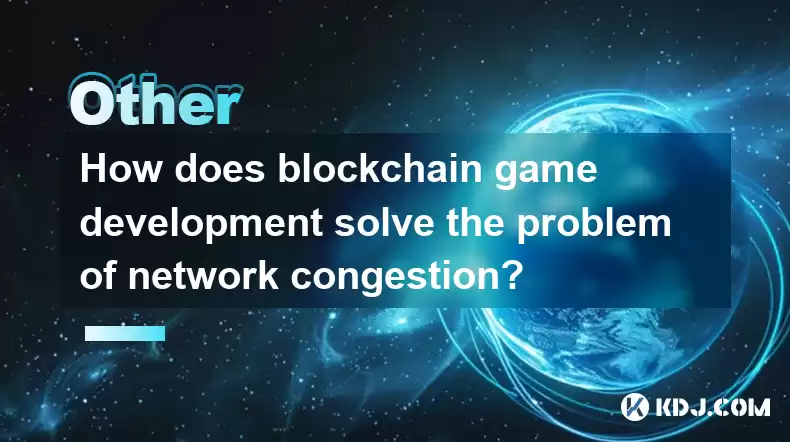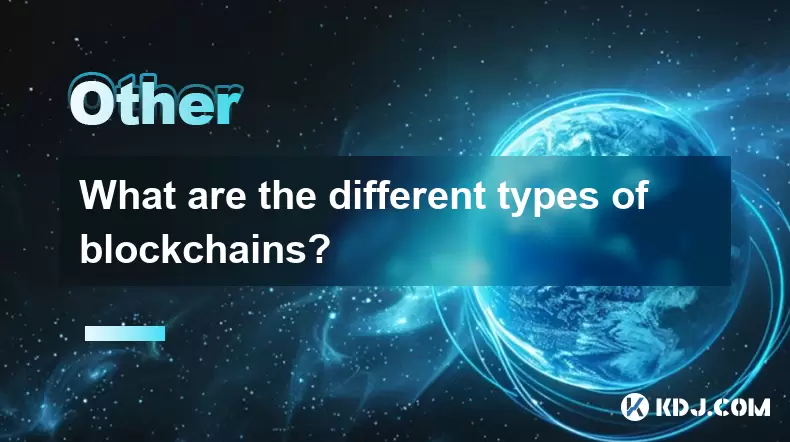-
 Bitcoin
Bitcoin $112400
-1.07% -
 Ethereum
Ethereum $3409
-3.27% -
 XRP
XRP $2.784
-6.60% -
 Tether USDt
Tether USDt $0.9997
-0.03% -
 BNB
BNB $739.3
-2.09% -
 Solana
Solana $158.0
-2.90% -
 USDC
USDC $0.9998
-0.02% -
 TRON
TRON $0.3213
-0.94% -
 Dogecoin
Dogecoin $0.1929
-5.01% -
 Cardano
Cardano $0.6974
-2.82% -
 Hyperliquid
Hyperliquid $36.69
-2.31% -
 Sui
Sui $3.327
-4.80% -
 Stellar
Stellar $0.3672
-5.18% -
 Chainlink
Chainlink $15.65
-3.07% -
 Bitcoin Cash
Bitcoin Cash $525.0
-1.68% -
 Hedera
Hedera $0.2291
-6.00% -
 Avalanche
Avalanche $20.91
-2.96% -
 Ethena USDe
Ethena USDe $1.000
0.00% -
 Toncoin
Toncoin $3.520
-1.12% -
 UNUS SED LEO
UNUS SED LEO $8.968
0.14% -
 Litecoin
Litecoin $105.7
0.26% -
 Shiba Inu
Shiba Inu $0.00001181
-1.79% -
 Polkadot
Polkadot $3.492
-2.08% -
 Uniswap
Uniswap $8.800
-3.10% -
 Dai
Dai $0.9999
-0.01% -
 Monero
Monero $289.9
-3.17% -
 Bitget Token
Bitget Token $4.243
-1.27% -
 Pepe
Pepe $0.00001006
-3.67% -
 Cronos
Cronos $0.1248
-5.68% -
 Aave
Aave $249.7
-2.50%
How does blockchain game development solve the problem of network congestion?
Blockchain game developers tackle network congestion with Layer 2 solutions like sidechains and state channels, enhancing game performance and user experience.
Apr 17, 2025 at 11:15 pm

Blockchain game development has become an increasingly popular field, with developers seeking innovative ways to leverage the technology's potential. One significant challenge that these developers face is network congestion, a problem that can severely impact the gaming experience. In this article, we will explore how blockchain game development addresses this issue, offering solutions that enhance the performance and user experience of blockchain-based games.
Understanding Network Congestion in Blockchain Games
Network congestion occurs when there is a high volume of transactions waiting to be processed on the blockchain. This can lead to slower transaction times and higher fees, which can be particularly frustrating for gamers who require quick and seamless interactions within their gaming environment. In traditional blockchains like Bitcoin and Ethereum, network congestion is a common issue, especially during periods of high demand.
The Impact of Network Congestion on Gaming
For blockchain games, network congestion can have several detrimental effects. Delayed transaction confirmations can disrupt gameplay, causing lags and interruptions that can ruin the gaming experience. Additionally, increased transaction fees can make it more expensive for players to engage in in-game transactions, which can deter participation and reduce the overall appeal of the game.
Layer 2 Solutions for Blockchain Games
One of the primary ways blockchain game developers address network congestion is through the implementation of Layer 2 solutions. These solutions operate on top of the main blockchain, processing transactions off-chain and then settling them on the main chain. This approach significantly reduces the load on the main blockchain, alleviating congestion and improving transaction speeds.
Sidechains: Sidechains are separate blockchains that run parallel to the main blockchain. They allow for faster transaction processing and can be customized to meet the specific needs of a game. By moving some of the game's transactions to a sidechain, developers can reduce the load on the main blockchain and improve overall performance.
State Channels: State channels enable multiple transactions to be conducted off-chain and then settled on the main blockchain in a single transaction. This method is particularly useful for games that require frequent, small transactions, as it minimizes the impact on the main blockchain and reduces fees.
Plasma: Plasma is a framework that allows for the creation of child blockchains that are anchored to the main blockchain. These child blockchains can process transactions independently, reducing the load on the main chain and improving scalability.
Optimizing Transaction Batching
Another strategy used by blockchain game developers to combat network congestion is transaction batching. This involves grouping multiple transactions into a single transaction, which is then processed on the blockchain. By reducing the number of individual transactions, developers can decrease the load on the network and improve transaction speeds.
Batching In-Game Transactions: Developers can batch in-game transactions such as item purchases, trades, and other interactions. This approach not only reduces network congestion but also lowers transaction fees for players.
Scheduled Batching: Some games implement scheduled batching, where transactions are collected over a period and then processed in batches at specific intervals. This method helps manage the flow of transactions and prevents sudden spikes in network demand.
Implementing Scalable Consensus Mechanisms
The choice of consensus mechanism can also play a crucial role in addressing network congestion. Traditional consensus mechanisms like Proof of Work (PoW) can be slow and resource-intensive, contributing to congestion. Blockchain game developers often opt for more scalable alternatives to improve performance.
Proof of Stake (PoS): PoS is a more energy-efficient consensus mechanism that can process transactions faster than PoW. By using PoS, developers can reduce the time it takes to confirm transactions, thereby alleviating congestion.
Delegated Proof of Stake (DPoS): DPoS is a variation of PoS that involves a smaller number of validators, which can lead to faster transaction processing. This mechanism is particularly suitable for games that require quick and efficient transaction confirmations.
Directed Acyclic Graphs (DAGs): Some blockchain games utilize DAGs, which allow for parallel transaction processing. This approach can significantly increase the throughput of the network, reducing congestion and improving the gaming experience.
Enhancing User Experience with Off-Chain Data Storage
To further mitigate the impact of network congestion, blockchain game developers often use off-chain data storage solutions. By storing non-critical data off-chain, developers can reduce the amount of data that needs to be processed on the blockchain, thereby decreasing congestion.
InterPlanetary File System (IPFS): IPFS is a decentralized storage system that can be used to store game assets, such as images and videos, off-chain. By leveraging IPFS, developers can reduce the load on the blockchain and improve the overall performance of the game.
Off-Chain Databases: Some games use off-chain databases to store player data and game state. This approach allows for faster data retrieval and reduces the need for frequent on-chain transactions, which can help alleviate network congestion.
Frequently Asked Questions
Q: Can blockchain games completely eliminate network congestion?
A: While blockchain game developers can implement various strategies to mitigate network congestion, it is challenging to completely eliminate it. The effectiveness of these solutions depends on factors such as the specific blockchain used, the volume of transactions, and the scalability of the implemented technologies.
Q: How do Layer 2 solutions impact the security of blockchain games?
A: Layer 2 solutions can enhance the scalability and performance of blockchain games, but they may introduce additional security considerations. It is crucial for developers to implement robust security measures to protect the integrity of off-chain transactions and ensure that they are securely settled on the main blockchain.
Q: Are there any trade-offs when using off-chain data storage in blockchain games?
A: Yes, using off-chain data storage can improve performance and reduce network congestion, but it may also introduce trade-offs. For instance, off-chain data may be less secure than on-chain data, and there could be additional complexity in managing and synchronizing data across different storage systems.
Q: How do different consensus mechanisms affect the cost of transactions in blockchain games?
A: The choice of consensus mechanism can significantly impact transaction costs. For example, Proof of Work (PoW) tends to have higher transaction fees due to its resource-intensive nature, while Proof of Stake (PoS) and other more scalable mechanisms can offer lower fees, making them more suitable for games with frequent transactions.
Disclaimer:info@kdj.com
The information provided is not trading advice. kdj.com does not assume any responsibility for any investments made based on the information provided in this article. Cryptocurrencies are highly volatile and it is highly recommended that you invest with caution after thorough research!
If you believe that the content used on this website infringes your copyright, please contact us immediately (info@kdj.com) and we will delete it promptly.
- BlockDAG, SEI, Ethena: Top Crypto Performers Under the Microscope
- 2025-08-03 10:50:16
- Bitcoin Blasts Past $119K: How Institutional Adoption and Macro Shifts Fuel the Fire
- 2025-08-03 10:55:16
- Crypto, Grok, and August: Decoding the Latest Trends and Insights
- 2025-08-03 11:10:16
- Crypto, Phishing, and Your Wallet: A New Yorker's Guide to Staying Safe
- 2025-08-03 10:30:16
- Troller Cat Meme Coin Presale Soars: A New King in the Crypto Jungle?
- 2025-08-03 10:30:16
- Grayscale, Altcoin Trust, and Mid-Cap Mania: What's the Deal?
- 2025-08-03 08:50:16
Related knowledge

What is the difference between on-chain and off-chain transactions?
Aug 02,2025 at 04:22pm
Understanding On-Chain TransactionsOn-chain transactions refer to digital asset transfers that are recorded directly on a blockchain ledger. These tra...

What is the double-spending problem and how does blockchain prevent it?
Aug 02,2025 at 01:07pm
Understanding the Double-Spending ProblemThe double-spending problem is a fundamental challenge in digital currency systems where the same digital tok...

What is the difference between a blockchain and a database?
Aug 01,2025 at 09:36pm
Understanding the Core Structure of a BlockchainA blockchain is a decentralized digital ledger that records data in a series of immutable blocks linke...

How does blockchain handle scalability?
Aug 02,2025 at 02:58pm
Understanding Blockchain Scalability ChallengesBlockchain scalability refers to a network's ability to handle an increasing volume of transactions wit...

What are the different types of blockchains?
Aug 03,2025 at 03:01am
Public Blockchains: Open and Decentralized NetworksPublic blockchains are the most widely recognized type of blockchain, characterized by their open a...

What is a hash in a blockchain?
Aug 02,2025 at 05:28am
Understanding the Concept of Hash in BlockchainA hash in the context of blockchain technology refers to a unique digital fingerprint generated by a cr...

What is the difference between on-chain and off-chain transactions?
Aug 02,2025 at 04:22pm
Understanding On-Chain TransactionsOn-chain transactions refer to digital asset transfers that are recorded directly on a blockchain ledger. These tra...

What is the double-spending problem and how does blockchain prevent it?
Aug 02,2025 at 01:07pm
Understanding the Double-Spending ProblemThe double-spending problem is a fundamental challenge in digital currency systems where the same digital tok...

What is the difference between a blockchain and a database?
Aug 01,2025 at 09:36pm
Understanding the Core Structure of a BlockchainA blockchain is a decentralized digital ledger that records data in a series of immutable blocks linke...

How does blockchain handle scalability?
Aug 02,2025 at 02:58pm
Understanding Blockchain Scalability ChallengesBlockchain scalability refers to a network's ability to handle an increasing volume of transactions wit...

What are the different types of blockchains?
Aug 03,2025 at 03:01am
Public Blockchains: Open and Decentralized NetworksPublic blockchains are the most widely recognized type of blockchain, characterized by their open a...

What is a hash in a blockchain?
Aug 02,2025 at 05:28am
Understanding the Concept of Hash in BlockchainA hash in the context of blockchain technology refers to a unique digital fingerprint generated by a cr...
See all articles

























































































